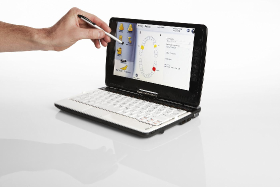The Canary System
PTR-LUM technology to detect early caries and monitor remineralization therapy
our technology
In 1999, our research group at the University of Toronto began examination of the application of Frequency Domain Photothermal Radiometry and Modulated Luminescence (FD-PTR and LUM) under the direction of Dr. Andreas Mandelis. This used technology developed by the Center for Advanced Diffusion-Wave and Photoacoustic Technologies (CADIPT) at the University.

When laser light is shone onto the tooth, the system measures the level of glow (luminescence or LUM) and heat (Photo-Thermal Radiometry or PTR) released from the tooth. Laser light interacts differently with healthy than with decayed teeth. By varying the pulse (frequency) of the laser beam, a depth profile of the tooth can be created to permit detection of decay as deep as 5mm from the tooth surface and as small as 50 microns in size (20 times smaller than a millimeter).
Because luminescence and heat released from carious (demineralized) regions are different from those released from healthy parts of the tooth, and the differences are due to both optical and thermal properties of the tooth, the method provides outstanding contrast between healthy and demineralized teeth which we use as a most sensitive indicator of caries.
The vast majority of the new technologies on the market today employ fluorescence technology, which detects for the presence of baceria, an indirect measure of tooth decay. Fluorescence also results in an increase in false positives due to the intrinsic autofluorescence properties of stain, calculus, prophy paste, and opacifying filler agents in many dental materials. The Canary System looks not only at luminescence, but also the photothermal effect of laser light on the tooth. By analyzing behaviour of both the luminescence and thermal radiation or heat, we gather very accurate information about the tooth's condition.
As lesions grow, the signal changes; as remineralization progresses, the signal indicates that improvement. The temperature rise on the tooth and in the pulp is no more than 1 degrees Celsius. There is no alteration of any of the tissues and no safety hazards such as those associated with dental x-rays.
What are the research and marketing claims behind The Canary System™?
The Canary System™ is an evidence-based caries detection system built upon a solid foundation of peer-reviewed lab and clinical research. For a comprehensive overview of our marketing claims and supported research, click here.